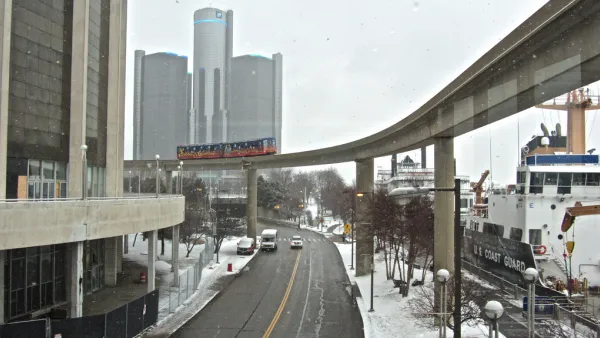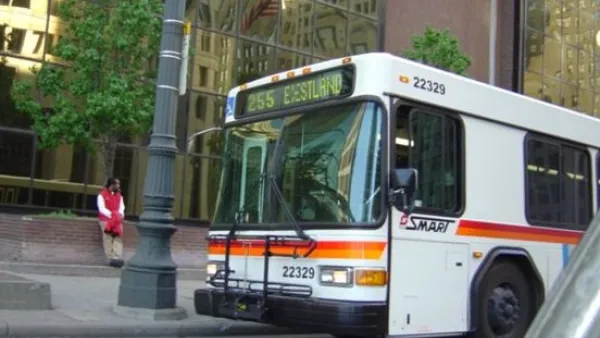Detroit is infamous for its lack of regional transit (or local transit for that matter), but the Regional Transit Authority of Southeast Michigan this month launched a master planning process that could finally fill some of the region's gaps.
Leonard N. Fleming reports on the mood at recent public hearings held by the Regional Transit Authority of Southeast Michigan (RTA) as it undertakes a master plan process that would set an agenda for transit in Wayne, Oakland, Macomb and Washtenaw counties.
The public hearings are taking place in advance of a 2016 ballot initiative that will ask voters "to fund the RTA and three bus rapid transit routes up Woodward from Detroit to Pontiac, Michigan Avenue from Detroit to Ann Arbor, and up Gratiot in Detroit to M-59." The master plan is expected to be complete by the end of 2015.
Ryan Felton reported the initial announcement of the master plan process, which is described as "a step forward in developing a comprehensive plan for public transportation across metro Detroit." Felton also notes the hiccups experienced by the RTA since its creation in 2012.
The RTA's website also includes a website introducing the master plan, titled the BEST: Regional Master Transit Plan, which it says will plan for transit on a 20-year horizon.
FULL STORY: Metro Detroit residents sound off on public transit

National Parks Layoffs Will Cause Communities to Lose Billions
Thousands of essential park workers were laid off this week, just before the busy spring break season.

Retro-silient?: America’s First “Eco-burb,” The Woodlands Turns 50
A master-planned community north of Houston offers lessons on green infrastructure and resilient design, but falls short of its founder’s lofty affordability and walkability goals.

Delivering for America Plan Will Downgrade Mail Service in at Least 49.5 Percent of Zip Codes
Republican and Democrat lawmakers criticize the plan for its disproportionate negative impact on rural communities.

Test News Post 1
This is a summary

Test News Headline 46
Test for the image on the front page.

Balancing Bombs and Butterflies: How the National Guard Protects a Rare Species
The National Guard at Fort Indiantown Gap uses GIS technology and land management strategies to balance military training with conservation efforts, ensuring the survival of the rare eastern regal fritillary butterfly.
Urban Design for Planners 1: Software Tools
This six-course series explores essential urban design concepts using open source software and equips planners with the tools they need to participate fully in the urban design process.
Planning for Universal Design
Learn the tools for implementing Universal Design in planning regulations.
EMC Planning Group, Inc.
Planetizen
Planetizen
Mpact (formerly Rail~Volution)
Great Falls Development Authority, Inc.
HUDs Office of Policy Development and Research
NYU Wagner Graduate School of Public Service





























